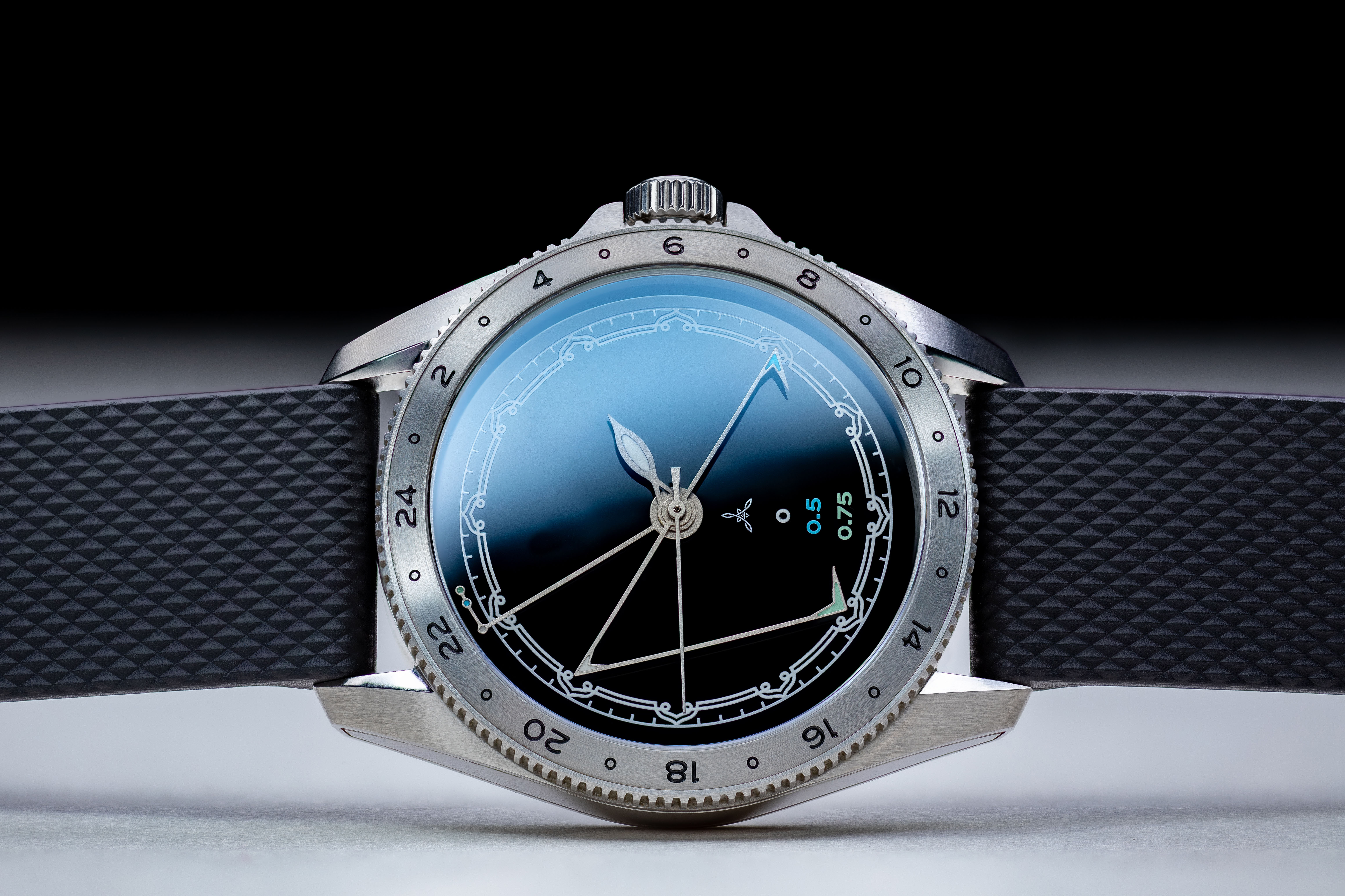How to read time
(slow scroll to interact)
(slow scroll to interact)
01
The Delta Type operates using a classic analog display.
Local time is indicated by:
The local hour hand on the 12-hours indices for hours
The local minute vertex on the 12-hour indices for minutes
Displayed time: 10:09 (AM)
Local time is indicated by:
The local hour hand on the 12-hours indices for hours
The local minute vertex on the 12-hour indices for minutes
Displayed time: 10:09 (AM)
02
Alternate time zone hours are read using the tri-color GMT hand on the 24-hour bezel. The corresponding minutes are read using the three-vertex minute hand on the 12-hour indices.
03
Whole hour offset GMT (GMT+3, GMT-12, etc.) time is indicated by:
The white GMT dot on the 24-hour bezel for hours
The white minute vertex on the 12-hour indices for minutes
Displayed time: 08:09 (AM)
The white GMT dot on the 24-hour bezel for hours
The white minute vertex on the 12-hour indices for minutes
Displayed time: 08:09 (AM)
04
30 minute offset GMT (GMT+5:30, GMT-2:30, etc.) time is indicated by:
The blue GMT dot on the 24-hour bezel for hours
The blue minute vertex on the 12-hour indices for minutes
Displayed time: 08:39 (AM)
The blue GMT dot on the 24-hour bezel for hours
The blue minute vertex on the 12-hour indices for minutes
Displayed time: 08:39 (AM)
05
45 minute offset GMT (GMT+5:45, GMT+12:45, etc.) time is indicated by:
The green GMT dot on the 24-hour bezel for hours
The green minute vertex on the 12-hour indices for minutes
Displayed time: 08:54 (AM)
The green GMT dot on the 24-hour bezel for hours
The green minute vertex on the 12-hour indices for minutes
Displayed time: 08:54 (AM)
06
In this displayed configuration, the 4 time zones are:
Local time: 10:09 PM EST (Washington DC, GMT-5)
Alternate zone 1: 08:09 AM PKT (Pakistan, GMT+5)
Alternate zone 2: 08:39 AM IST (India, GMT+5:30)
Alternate zone 3: 08:54 AM NPT (Nepal, GMT+5:45)
Local time: 10:09 PM EST (Washington DC, GMT-5)
Alternate zone 1: 08:09 AM PKT (Pakistan, GMT+5)
Alternate zone 2: 08:39 AM IST (India, GMT+5:30)
Alternate zone 3: 08:54 AM NPT (Nepal, GMT+5:45)




.jpg)



